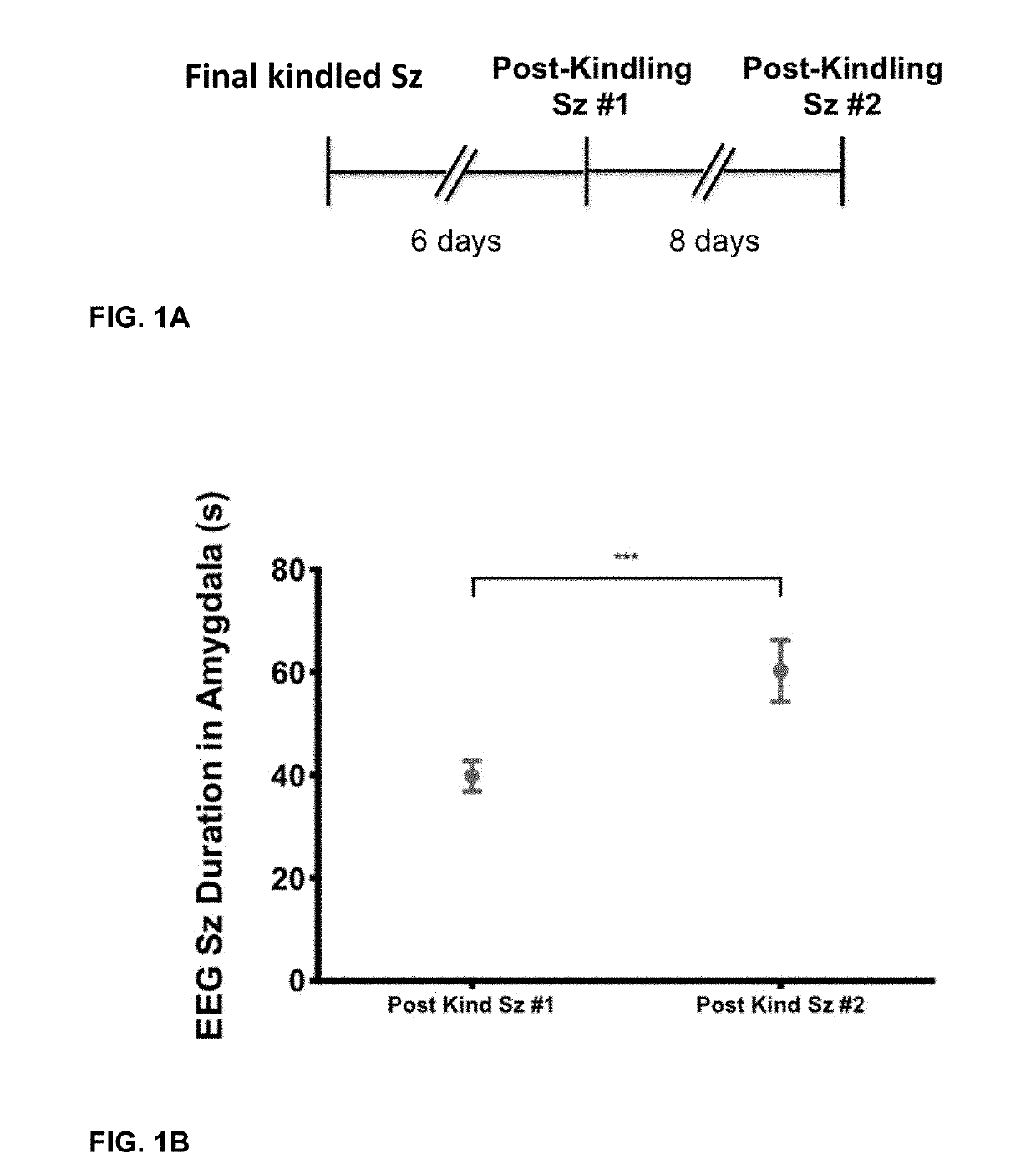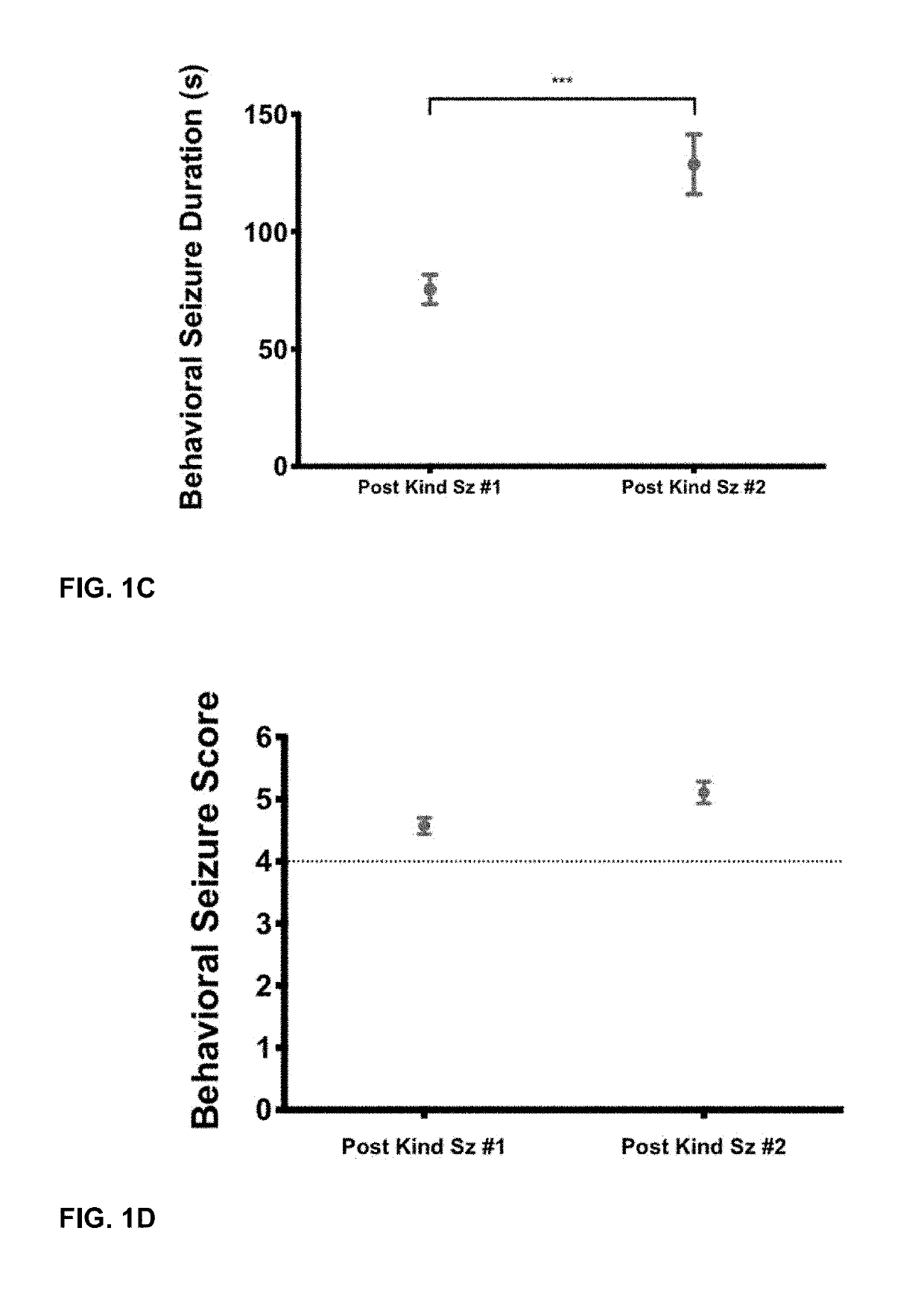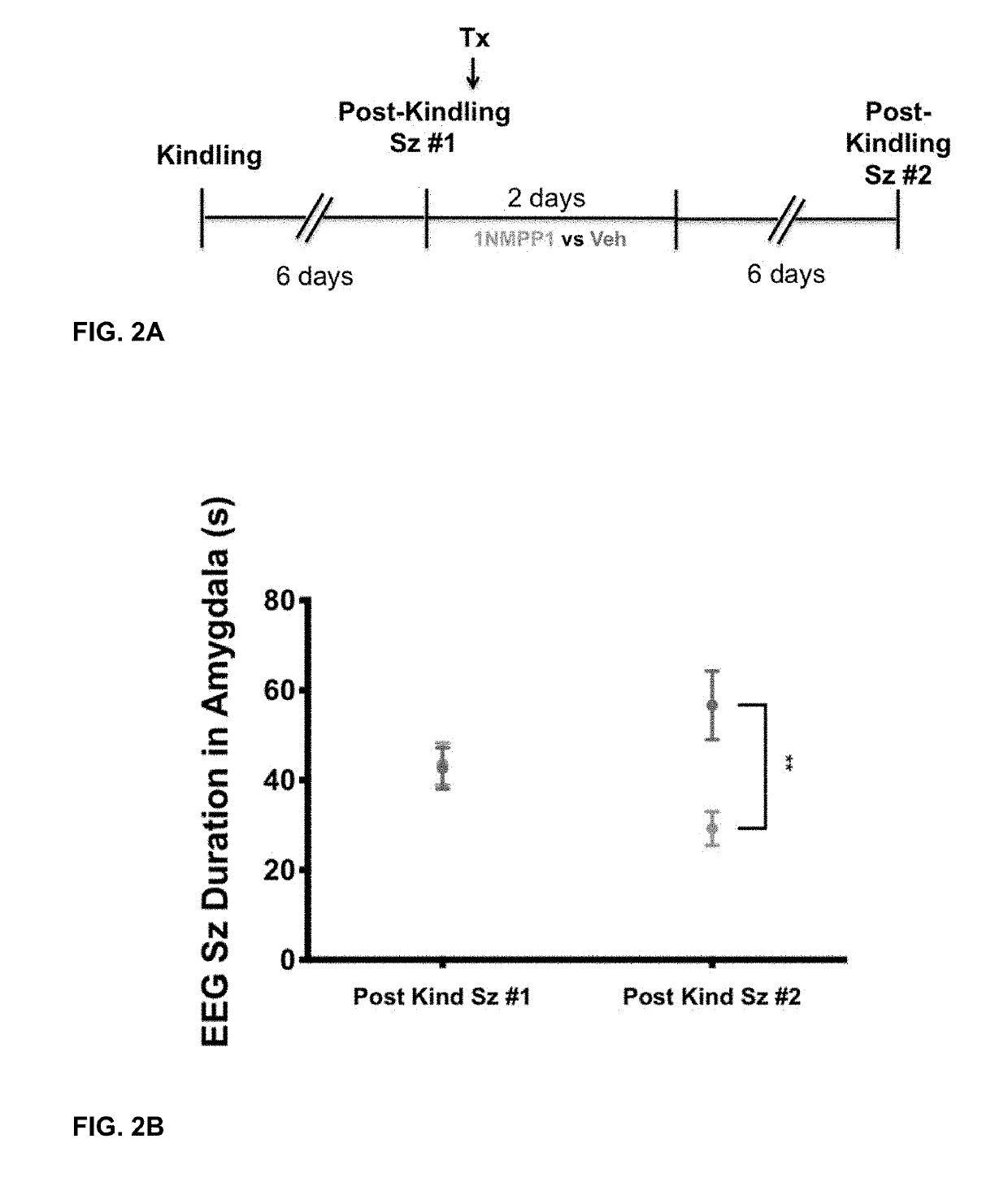Methods for the Prevention or Treatment of Epilepsy
a technology for epilepsy and treatment, applied in the field of epilepsy prevention or treatment, can solve the problems of serious public health problems and great economic burden, no measurable improvement in the proportion of newly diagnosed epilepsy patients free of seizures, and recurrent seizures occurring without stimulation
- Summary
- Abstract
- Description
- Claims
- Application Information
AI Technical Summary
Benefits of technology
Problems solved by technology
Method used
Image
Examples
example 1
and Methods
Animals
[0052]All animal procedures were approved by the Institutional Animal Care and Use Committee (IACUC) at Duke University and conform to the National Institutes of Health and Duke University institutional guidelines for the care and use of experimental animals. Animals were maintained on a 12-hour light / dark cycle with food and water available ad libitum. Wild type (WT) adult (8-12 wk) C57 / bl6 male mice were obtained from Charles River. TrkBF616A mice were originally obtained from Dr. David Ginty (Chen et al. 2005) and backcrossed to the C57 / bl6 line for at least seven generations. This knockin mouse harbors a point mutation on the TrkB allele, substituting an alanine for phenylalanine within the ATP binding pocket of the TrkB kinase domain. This mutation renders TrkB protein uniquely susceptible to kinase inhibition by small molecule derivatives of the general kinase inhibitor PP1, including 1-(1,1-dimethylethyl)-3-(1-naphthalenylmethyl)-1H-pyrazolo[3,4-d]pyrimidin-...
example 2
on of Epileptogenesis Induced by an Isolated Seizure
[0060]We implemented a variation of the kindling model whereby a single evoked seizure induced increased duration of the next evoked electrographic and behavioral seizure, evidence of progression of epileptogenesis. To induce “kindling,” adult mice were subjected to repeated brief (1 second) low intensity stimulations locally within the amygdala twice daily, resulting in evoked seizures of increasing duration and propagation. Animals were termed “kindled” following the third consecutive evoked seizure with score of Class 4 or greater (the “Final Kindled Seizure”). Following a six-day stimulus free period, a series of stimuli (1 sec) was administered commencing at 20 μA and increasing by 20 μA at one minute intervals until an electrographic and behavioral seizure was evoked (Post-Kindling Seizure #1). Following an additional eight day stimulation free period, the current required to evoke Post-Kindling Seizure #1 was administered a ...
example 3
Genetic Inhibition of TrkB Kinase after an Evoked Seizure Prevents Progression
[0061]TrkB kinase is activated following an evoked seizure in the kindling model (He et al 2014). We therefore asked whether initiating inhibition of TrkB signaling immediately following an evoked seizure would prevent seizure-induced progression. We used the chemical-genetic approach with TrkBF616A mice because this provides both molecular specificity and temporal control of inhibition of TrkB kinase activity. Initiating inhibition of TrkB kinase with 1NMPP1 immediately following Post-Kindling Seizure #1 in TrkBF616A mice (FIG. 2A) significantly reduced the duration of both electrographic (FIG. 2B: 1NMPP1: 29.2±3.8 s, Vehicle: 56.6±7.6 s; p<0.01) and behavioral features of Post-Kindling Seizure #2 (FIG. 2C: 1NMPP1: 63.5±10 s, Vehicle: 139.8±16.5 s; p<0.01) when compared to vehicle-treated controls. A nonsignificant trend toward reduction of behavioral seizure class of Post-Kindling Seizure #2 was evident ...
PUM
| Property | Measurement | Unit |
|---|---|---|
| concentration | aaaaa | aaaaa |
| concentration | aaaaa | aaaaa |
| medically refractory | aaaaa | aaaaa |
Abstract
Description
Claims
Application Information
 Login to View More
Login to View More - R&D
- Intellectual Property
- Life Sciences
- Materials
- Tech Scout
- Unparalleled Data Quality
- Higher Quality Content
- 60% Fewer Hallucinations
Browse by: Latest US Patents, China's latest patents, Technical Efficacy Thesaurus, Application Domain, Technology Topic, Popular Technical Reports.
© 2025 PatSnap. All rights reserved.Legal|Privacy policy|Modern Slavery Act Transparency Statement|Sitemap|About US| Contact US: help@patsnap.com



